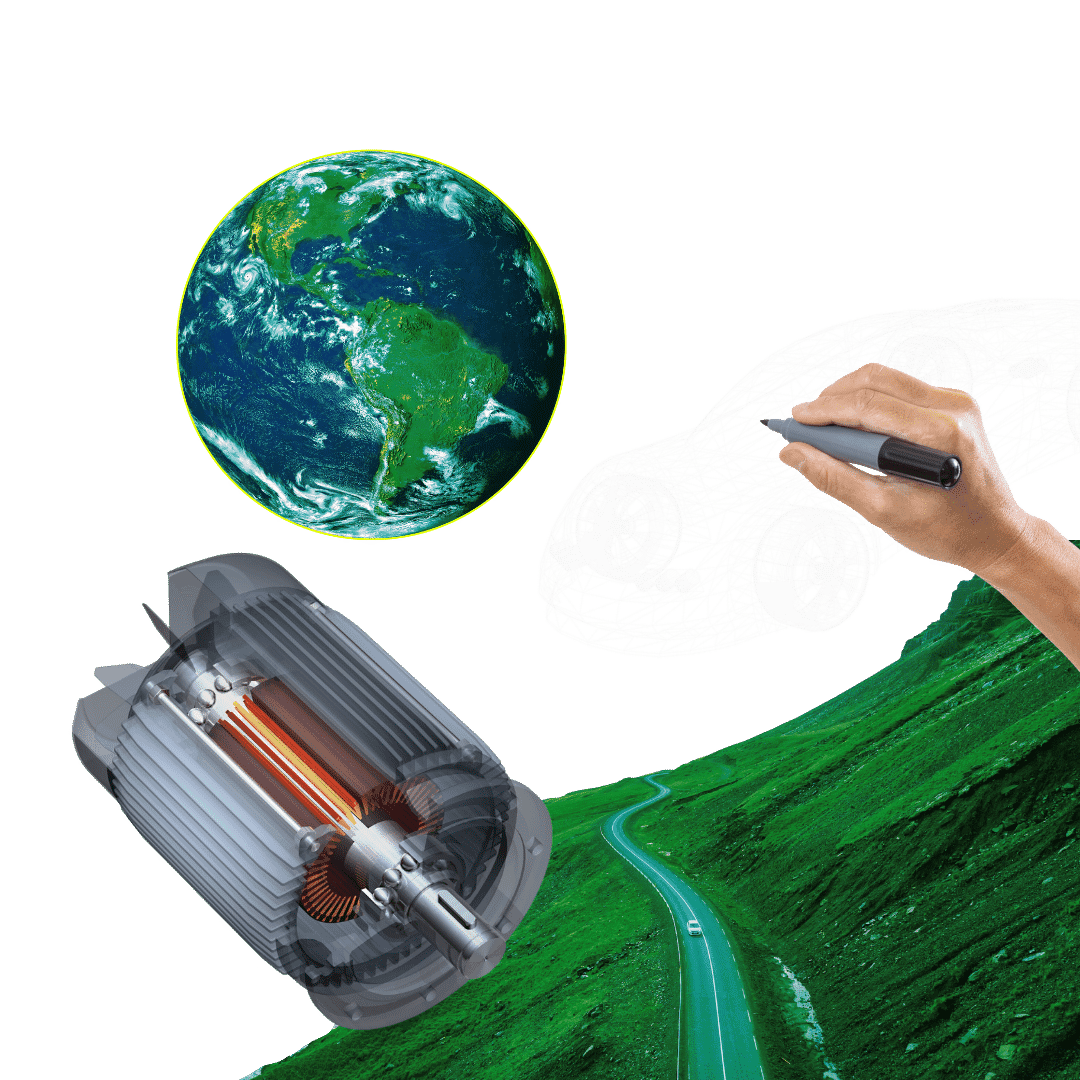Discover
industry
Motors
Following batteries, motors are the second cornerstone of mobility decarbonisation and are subject to the same principles regarding supply chain sustainability - raw material chains matter! The type of ore being extracted, the blend of rare earth metals, the separation method and the product manufacturing phase are highly sensitive to supply chain changes, and we have the expertise to help.
Contact us

our industry experience
LCA for motors
We lead the way with analyses of REE products, including metals, magnets and motors. We have led the creation of LCA guidelines (Product Category Rules) for the sector alongside our partners at the Global Rare Earth Industry Association (REIA) and have an expansive database of upstream and downstream processes crucial for manufacturing key decarbonisation technology like wind turbines and electric motors.
our work
How we can support the industry
Assess custom magnet configuration
Quantify and understand where the impacts are
Guide you in ESG work and solutions to implement for regulations
Help you build realistic timelines and steps for net zero
Analyse your supply chain for key mobility raw materials
Proprietary database of rare earth, magnet and supply chains

Let us measure and mitigate your environmental impact for informed sustainability
As field experts, we use Life Cycle Assessment (LCA) methodology to meticulously quantify environmental impacts in the critical raw material industry. We provide the insights you need to make environmentally responsible and risk-reducing decisions.
Book a callMaterial LCA
Technology
Try our software for assessing and lowering impacts today

FAQ
What environmental impacts are associated with the production of electric vehicle (EV) motors?
The production of EV motors can have various environmental impacts, including energy consumption during manufacturing, emissions from materials production (e.g., copper, aluminium, rare earth elements), management of hazardous materials, and responsible disposal or recycling to minimise waste and pollution.
What materials are commonly used in EV motors, and how do they impact the environment?
EV motors typically use materials like copper, aluminium, and rare earth elements (REE). The environmental impact varies based on factors such as mining practices, recycling capabilities, and the overall lifecycle analysis of these materials.
How do the manufacturing processes of EV motors affect their overall environmental sustainability?
The sustainability of EV motors is influenced by manufacturing processes, including energy consumption, waste generation, and production technology choices. These factors play a significant role in determining the environmental footprint of EV motor production.
Are there any ongoing research projects on improving the understanding of the impact of EV motors and its components?
Yes, we have multiple ongoing projects that focus on identifying EV motors and permanent magnets value chain and their environmental impacts.
Can I learn about the environmental impact of the permanent magnets used in EV motors?
Yes, we are conducting extensive research and can assist you in understanding the environmental impact of permanent magnets used in EV motors using LCA.
What are the challenges and opportunities for improving the environmental sustainability of EV motors and its components in the future?
To increase the sustainability of EV motors in the future, there are several challenges that need to be addressed. These include improving the sustainability of materials sourcing, such as REE, enhancing recycling capabilities, and reducing the carbon footprint of the manufacturing process. However, there are also opportunities for innovation and collaboration to tackle these challenges and further improve the sustainability of EV motors.
What challenges are associated with rare earth element (REE) usage in EV motors?
Challenges related to REE usage in EV motors include limited availability, geopolitical dependencies on certain countries for extraction, potential environmental impacts from mining and processing, and the need to explore alternative materials to reduce reliance on REE.